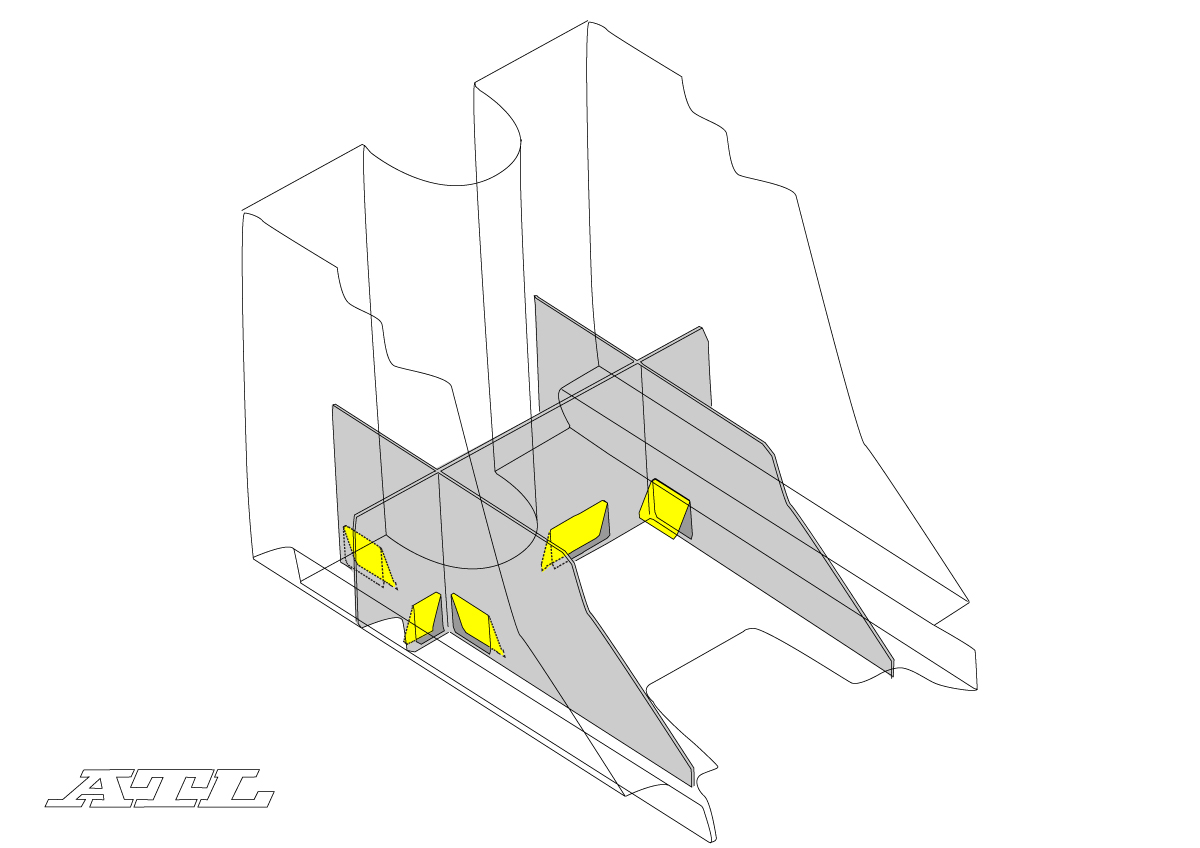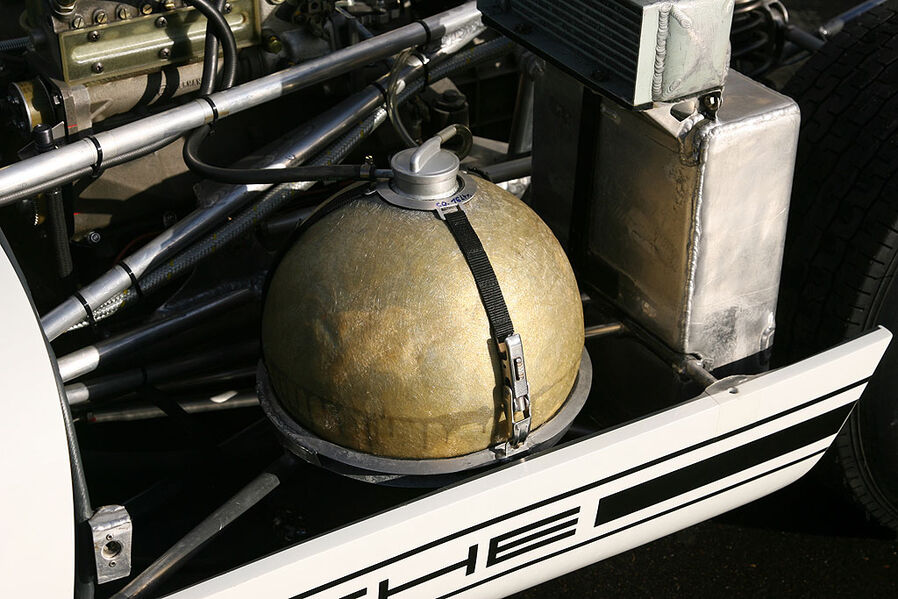http://scarbsf1.wordpress.com/2012/06/0 ... el-system/
One bit got me intrigued, from his drawing of a simplified baffle system:

The footnote reads: "Baffle system simplified: the inside of the tank is crossed with baffles with one way trap doors to direct fuel to the rear centre compartment."
My question is: why to the rear center compartment? I understand why to send the fuel down and to the rear, but why to the center? Could it be better to direct it either to the rear left or rear right, in a circuit dependent manner?
One desings an F1 car laterally symmetric within reasoneable limits, as the car has to complete a season, but in certain circuits most corners, or at least the most important corners, have a predominant direction. Montmelo is a prime example, where most critical corners are right handers, and we know that teams do not shy out of assimetry when needed, at least Mclaren doesn't.
The fuel tank is a piece that one could design specifically for each circuit, that can be changed even in between sessions, and that controls the placement of a lot of weight in the car. At the start of the race it is symmetric, but with its 160Kg (give or take) of fuel, as it empties it would be easy to place some 20Kg of extra weight either to the right or to the left of the centerline (up to 40cm). Note also that it can be done without placing the fuel any higher than if sending it to the center.
If this makes the car too unstable, one could use the trick only for the last 10-20Kg, making it a qualifying only feature. Specially in qualifying this could be useful, as tyre life doesn't come into play.
So again:
1) Why send the fuel to the center rear and not left rear or right rear?
2) Where would the shifted weight be more beneficial in critical corners: in the inside or in the outside?



